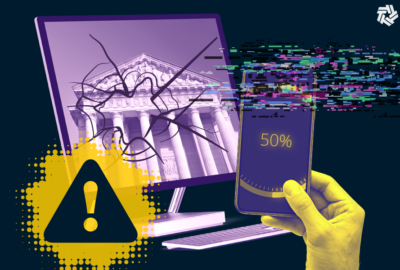Insight by Granicus
Deepening relationships: How agencies are delivering on customer experience
Incremental changes to CX can help agencies reach a more human-centered, personalized approach in their interactions with the public.
As agencies continue to move toward more digital, streamlined communications with individual customers, maintaining a human-centered approach is critical.
Technology can act as a conduit to reaching better communication with customers, but at the same time, it can be challenging for agencies to figure out where to start with adoption, Bob Ainsbury, chief product officer at Granicus, told Federal News Network.
“The technology itself is rapidly changing and adapting,” Ainsbury said in an interview. “A massive shift from the old way to the new way is likely to cause confusion and dysfunction. It takes a long time.”
So, what’s the right approach for agencies to take? Ainsbury said, it’s all about being agile and taking smaller steps, rather than trying to overhaul an entire system.
“If you start with this very large, monolithic approach, you’ll miss the point,” Ainsbury said. “Incremental changes will allow you to embrace technologies when they come available.”
For example, implementing technology that streamlines the use of two-way SMS text messages with customers can prove highly beneficial and aid that human-centered approach that many agencies are striving to incorporate.
“It’s about distilling it down to a small, definable thing,” Ainsbury said. “It can literally be, ‘how do you make this one improvement?’”
Ainsbury pointed to an example in the Labor Department’s HIRE Vets Medallion Program, which aims to recruit and retain military veterans.
Granicus worked with the program to incorporate personalized messages to veterans that were tailored based on the individual veteran’s application status, geographic location and employer size.
After delivering more personalized calls to action, the HIRE Vets Medallion Program eventually reached a 127% increase in engagement with customers.
“Personalization should be in every part of communication,” Ainsbury said. “The statistics are clear — there’s no doubt personalization works.”
Adding more personalization in outreach to customers can also support agencies’ efforts to improve diversity, equity, inclusion and accessibility (DEIA), according to Ainsbury.
“It’s not just what you say to the person, it’s how you say it,” he said. “We develop algorithms to help with that personalization — it’s really a huge factor in engagement. The driving force behind that isn’t just responsiveness to SMS, it’s the fact that it’s reaching a much broader community.”
Beyond those small, initial steps like two-way messaging, developing “omnichannel” communications will be additionally important to agencies to better engage with individual federal customers. For instance, Ainsbury said, if a customer first reaches out to an agency by phone, it’s key that the individual can then be able to communicate and interact with the agency through other methods as well.
“If the case has been brought forward over the phone, it can then be responded to by email, and then the email can be used to then go to the website to get information, and then maybe back on a phone call,” Ainsbury said.
Improving customer experience may also be one way to try to improve the public’s trust in government, which is at an all-time low. In 2023, just 35% of Americans said they trust the federal government.
One way to achieve a greater level of trust, Ainsbury said, is by closing feedback loops with customers. That can mean, for example, collecting feedback from customers on their experience, making changes based on that feedback and then informing customers of those changes and where the data came from.
“Transparency with data is central to a successful program,” Ainsbury said. “In every email communication, for instance, there should be a [link to an explanation of] ‘why am I receiving this?’ It’s a very simple example of building trust.”
Ultimately, as technology continues to rapidly develop, especially in artificial intelligence, Ainsbury said agency communications have the potential to become more advanced, while still maintaining that critical human-centered element.
“The technology that is enabling this personal human-centered approach is artificial intelligence,” Ainsbury said. “Generative AI now allows, at a massive scale, hundreds of millions personalized communications. That to me is the great breakthrough — the convergence of technology, personalization and data to create impact.”
Listen to the full show:
Copyright © 2025 Federal News Network. All rights reserved. This website is not intended for users located within the European Economic Area.
Related Stories
GSA considers text messages as new frontier for better customer experience
Focusing on civil servants, customer experience may lead to better trust in government
Featured speakers
-

Bob Ainsbury
Chief Product Officer, Granicus
-

Drew Friedman
Reporter, Federal News Network
Upcoming Events
Related Stories
Top Stories

Bob Ainsbury
Chief Product Officer, Granicus
Bob is the Chief Product Officer at Granicus, where he is responsible for software engineering, security, cloud, architecture, and product management. With deep roots in software development, he has led engineering organizations of all sizes from start-ups to public companies. He is a published author and his business and technology perspectives have been quoted in the Wall Street Journal, The Financial Times, on CBS Radio, and on National Public Radio.

Drew Friedman
Reporter, Federal News Network
Drew Friedman is Federal News Network’s reporter covering workforce, pay and benefits. She previously worked as a producer for the program Government Matters at WJLA-TV, covering the business of the federal government. Drew graduated from the University of Virginia in 2018 with a B.A. in media studies.






